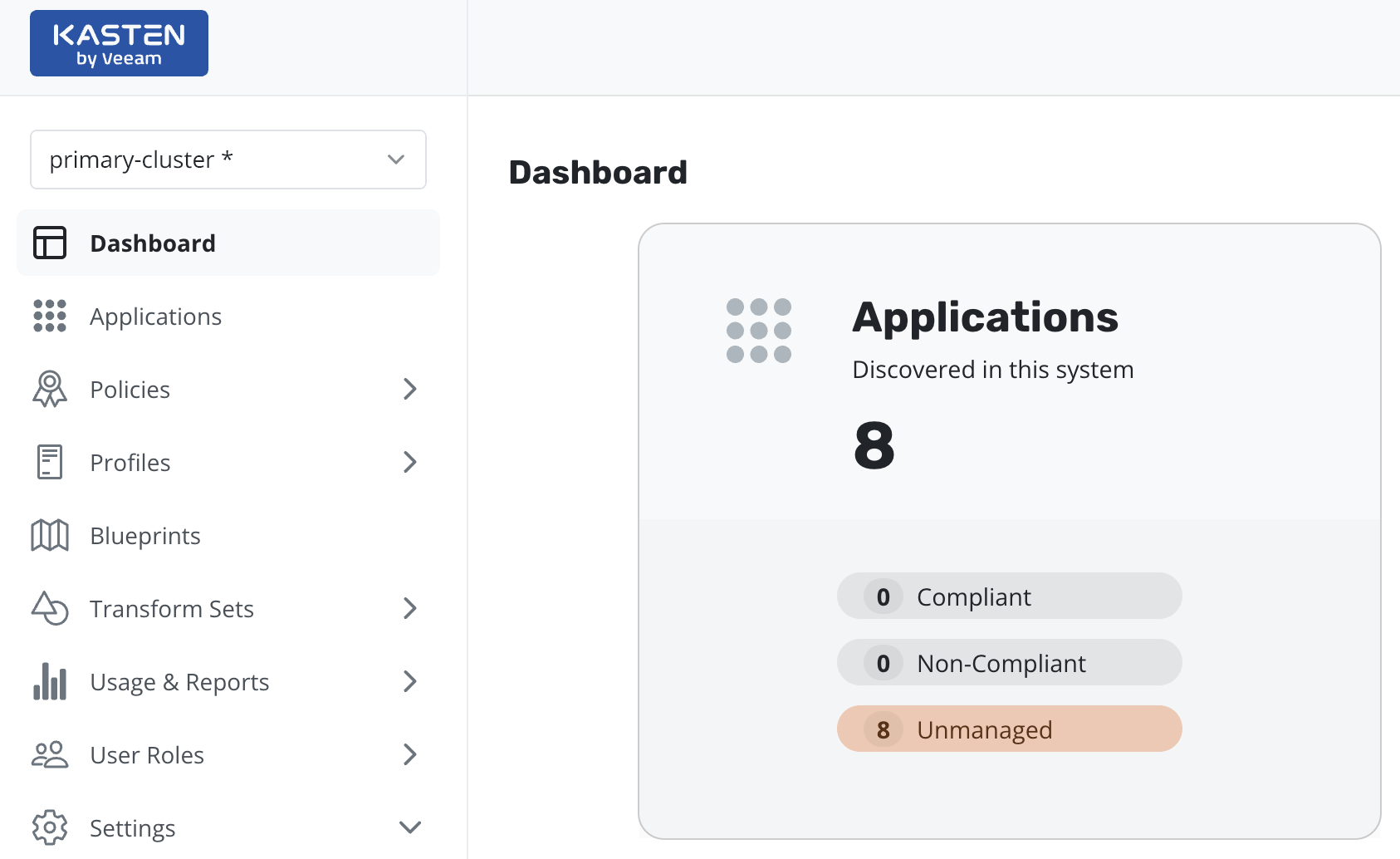Dashboard Access
Once a primary cluster is configured for the K10 Multi-Cluster Manager features can be accessed via the K10 Dashboard.
Multi-Cluster Admins
The K10 Multi-Cluster Manager dashboard will be available at https://<URL to k10 gateway service>/k10/#/clusters for K10 exposed externally or http://127.0.0.1:<forwarding port>/k10/#/clusters for K10 exposed through kubectl port-forward during K10 install. Refer Dashboard Access for more information.
If a cluster is setup as primary, the K10 dashboard will have a drop-down at top of the navigation sidebar that allows navigation to the K10 Multi-Cluster Manager dashboard.
For users to get admin access to the K10 Multi-Cluster Manager dashboard as well as other K10 Multi-Cluster features, additional role bindings may be required.
The k10-mc-admin ClusterRole is installed during K10 install/upgrade.
It grants admin users access to Distributions, Clusters, K10 Config, Secrets
and Multi-Cluster RBAC configurations in the K10 multi-cluster namespace.
During bootstrapping, K10 creates a RoleBinding for a default Group
k10:admins in the K10 multi-cluster namespace. Admin users can be added
to this Group and will be able to use the above k10-mc-admin ClusterRole.
Note
k10-mc-admin will be installed under the name <release_name>-mc-admin.
This ClusterRole is not configurable and is installed with K10.
You can also create role bindings for existing users or service accounts.
To bind the k10-mc-admin ClusterRole to a User, use the following command
$ kubectl create rolebinding <name> --clusterrole=k10-mc-admin \
--namespace=kasten-io-mc \
--user=<name>
To bind the k10-mc-admin ClusterRole to a ServiceAccount, use the following
command
$ kubectl create rolebinding <name> --clusterrole=k10-mc-admin \
--namespace=kasten-io-mc \
--serviceaccount=<serviceaccount_namespace>:<serviceaccount_name>
- The complete RBAC reference can be found in the
K10 Multi-Cluster RBAC section.
Admin users might also need to configure additional K10ClusterRoleBindings. The K10ClusterRoleBindings allow users to be granted access to the secondary clusters.
K10ClusterRoleBindings are used for defining who (users/groups) have what access in which clusters. They are resources that can be created in the primary cluster to give users/groups access to all or some secondary clusters.
During bootstrapping, K10 creates a K10ClusterRoleBinding in the K10
multi-cluster namespace. The default group for this binding is
k10:admins. Other admin users or groups can be
added to this K10ClusterRoleBinding via API or via the dashboard, or a
new K10ClusterRoleBinding can be created.
The complete K10ClusterRoleBinding reference can be found in the
K10 Multi-Cluster Access section.
Multi-Cluster Users
For users who need access only to certain cluster-level operations but not the K10 Multi-Cluster Manager configurations, admins can configure users to have limited access control using K10 Multi-Cluster RBAC. Refer Multi-Cluster User Access for more information.
